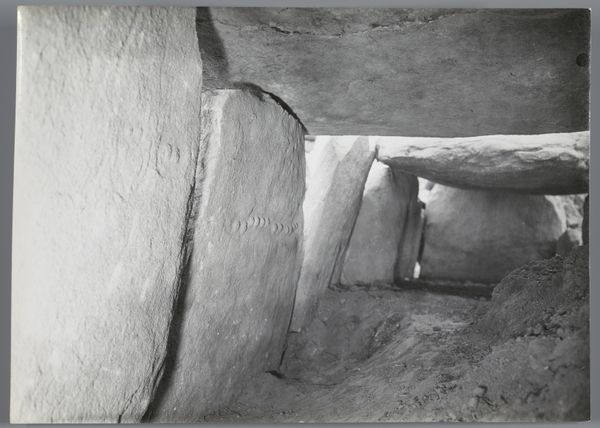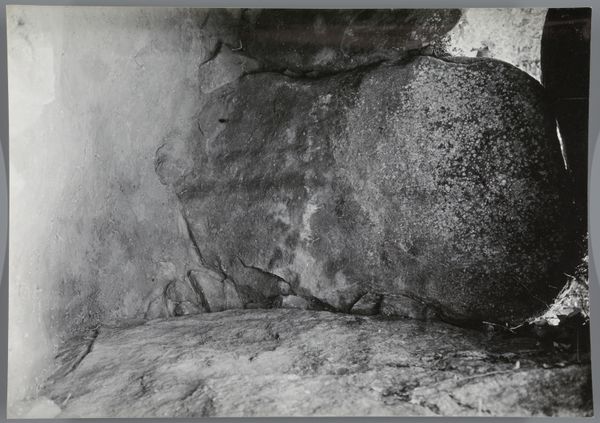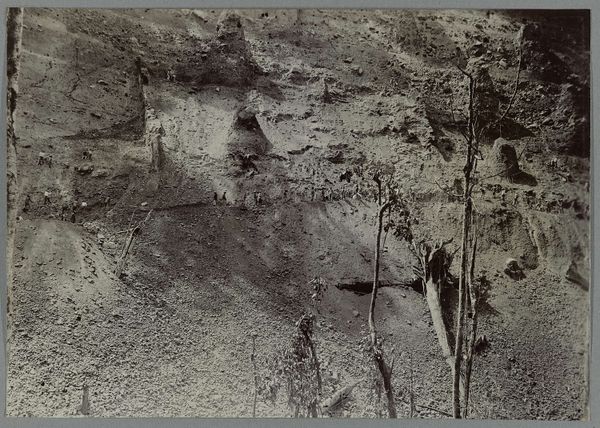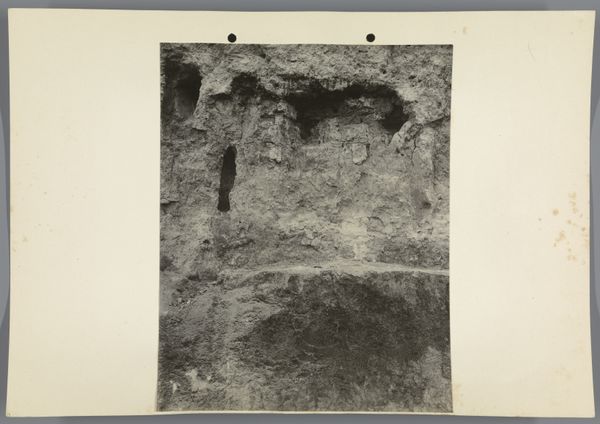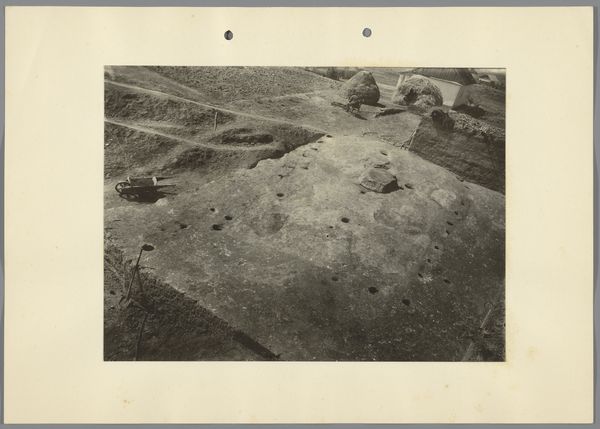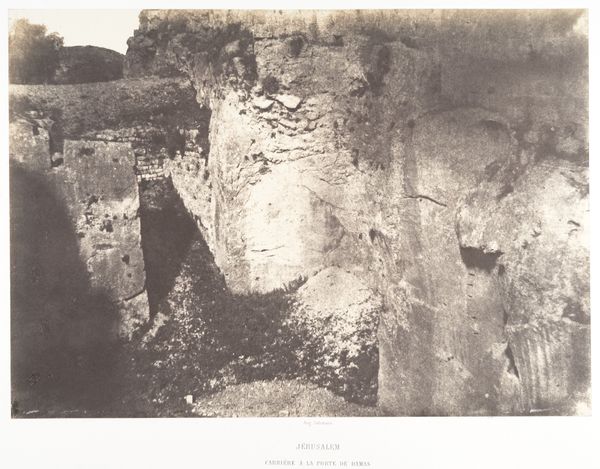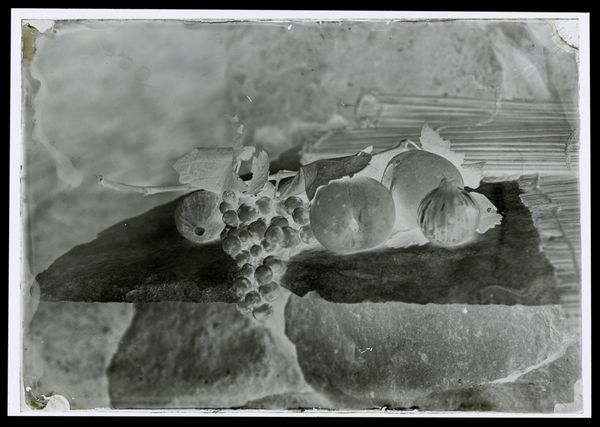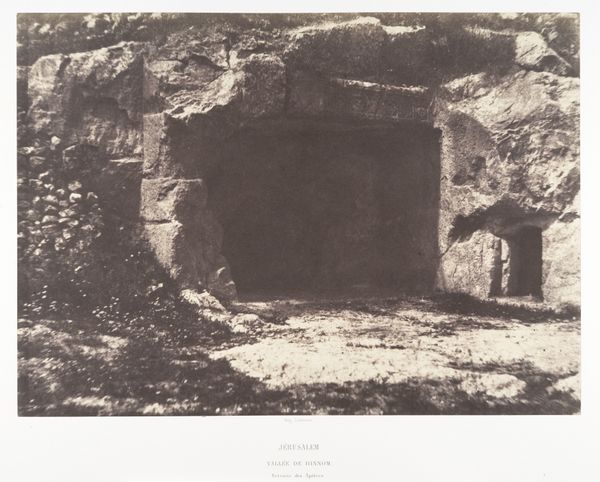
sculpture
#
sculpture
#
landscape
#
ancient-mediterranean
#
sculpture
Dimensions: height 118 mm, width 171 mm
Copyright: Rijks Museum: Open Domain
Editor: So, here we have an image of the “Hunebed van Kerguntuil, Trégastel,” possibly from 1939, attributed to Jan Lanting. It looks like a sculpture of sorts made of giant rocks in a landscape. It really evokes a sense of mystery and immense age. What catches your eye about this piece? Curator: What interests me is how the making of this, and its encounter by Lanting's lens, challenge notions of sculpture. These megaliths, likely erected millennia ago, weren’t necessarily ‘sculpted’ in a traditional sense. Their placement involved immense labor, a manipulation of the raw material of the earth. The 'art' is thus relational - born of the relationship between people, materials, and purpose. Editor: That's a fascinating perspective! So you're saying the artistic value lies less in the shaping of the stone and more in the act of moving and placing them? Curator: Precisely. Consider the societal effort demanded. It wasn't just moving rocks; it was resource management, coordinated labor, and likely ritual significance. Lanting’s photograph then freezes this social act across time. The black and white tones emphasize the materiality and weathering of the stone, prompting us to reflect on both the endurance of the materials and the transient nature of human endeavor. What do you think Lanting, as the image-maker, is contributing to the life of this monument? Editor: That makes me think about preservation, and the labor that went into archaeology at this time... I hadn’t thought of that. Thanks! I’ll never look at old stones the same way. Curator: It reveals how intertwined are labor and our conceptions of art and culture. Food for thought!
Comments
No comments
Be the first to comment and join the conversation on the ultimate creative platform.

